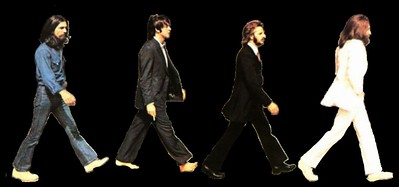It’s January 1994, fourteen years after musical legend John Lennon has passed away. His then-wife Yoko Ono gifted Paul McCartney three cassette recordings: an action that would lead to the creation of the final Beatles song that the world would hear. ‘Now and Then’ was one of these three home recordings written by John Lennon.
By 1995, the three remaining Beatles had begun working on the ruminative project, The Beatles Anthology. ‘Now and Then’ was to be considered as the third reunion single alongside two separate Lennon demos, ‘Free as a Bird’ and ‘Real Love.’ The bandmates had come together to work on the track, though creative confrontations between the members resulted in two days of recording and eventually a total jettison of the song, predominantly to George Harrison’s aversion – his stance: “F***ing rubbish.”
The original demo features an electrical buzz throughout that heavily obscures the music, the soft, static sputter smearing Lennon’s vocals which in the most beautiful irony, are the life of the reunion single. It’s likely that George found it a dishonour in part to John by releasing an incomplete recording of the band – a release that didn’t memorialise his best friend/bandmate/hero was an injustice. So, due to the complications infringing on the production that left Lennon’s tape unmixable, the song remained untouched – until now.
Today, in gratification to Peter Jackson’s cutting-edge audio restoration tech, all parts of the tape can be isolated down to their individual components. This application to ‘Now and Then’ allowed for preservation and clarity of Lennon’s vocals in separation to the piano, which could now be moved lower in the mix and become less intrusive – although I’d argue with the execution of this.
In the recording, Paul added a Harrison-esque guitar solo whilst including vocal fills and bass guitar. Ringo Starr performed the drums. In homage to dear and long-time producer George Martin, the late ‘fifth Beatle’s’ son Giles arranged a string score within the style of his father; a pure decision to emulate as much of the personality and life of the Bealtes’ music through a hereditary nature.
‘Now and Then’, although an amazing accomplishment, suffers significantly in its tone. One of the largest differences to the other reunion singles would be its loss of Jeff Lynne, co-founder of the band ELO and Beatles’ enthusiast. Lynne was evidently an important item in the tonal authenticity of the previous singles whereas it’s clear that management requested a modern approach: mixing engineer and producer Spike Stent.
Stent is a hugely successful producer, working with masses of successful modern pop artists, however… This sound is not The Beatles. It’s evident that the instruments on the track have been overly compressed to a synthetic state; one of the key audio associations we could have with a Beatles track is the sound of their production, a sound that was consistent with the technology they had access to. Stent’s modern production techniques have caused ‘Now and Then’ to become a pop song among the likes of Ed Sheeran.
Despite the nose-diving attempt to achieve an updated sound, the track finds its authenticity in the classically conversational nature of a typical Beatles recording, finding footing through the illusion of two bandmates, reunited singing eye-to-eye into one microphone. Although the lyrics were written and performed by John, a few incomplete lines were mumbled in the recording which Paul later filled in himself. Notably, it can be heard at the end of verse one in which John sings “we will know for sure / That I -” for Paul to take over with “will love you’” What results here is an emotional dialogue between the two bandmates, Paul completing his duty to John whilst finishing the latter’s song, vocalising his parting words. The lyrics of the song seem to speak of a reminiscence for a lover, though a second analysis could surmise that in a new context, it echoes Paul and Ringo’s reminiscence of John and George, their time together as a band. In this case, the song serves as an honest and sincere encirclement, a sorrowful ending.
‘Now and Then’ is a beautiful ballad song that despite its great orchestration and musical performances, misses on a lot of the dulcetness of a true Beatles’ song. What makes a “Beatles song” isn’t exactly a question that has an answer either, except that since the writing of this song came with many limitations it allows it to arise. Now and Then fails to reach its fullest due to the limits of two lost bandmates, becoming really more of an art piece, though one that brings a full sense of closure to the history of The Beatles. In the end, it’s a work of sentimentality; a tribute piece from Paul and Ringo to their two best friends and their legacy. What makes this single so touching is its authenticity; commemoration and respect have been sewn intricately through this song by the two bandmates – ‘Now and Then’ serves as an act of gratification to the times the band had together. It isn’t a song in the sense; it’s a love letter, an appreciation from Paul and Ringo for John’s contribution to the world, to art and culture, and his impact upon countless lives throughout the globe.
Image Credits: “beatles – abbey road” by oddsock is licensed under CC BY 2.0.

